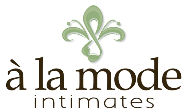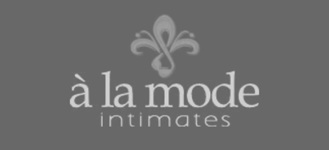How To Measure Yourself For A Bra
There are lots of "bra fit formulas" floating around the internet but it is important to understand that the formula is only a general trend and not an exact science. The truth is bra sizes are not standardized and one company's 36D might be another company's 34B. It really depends on how they are manufactured because some brands run tight while other brands run loose, it just depends, and having a familiarity with brands and how they fit is crucial. Another factor invovled is where the company is located and what sizing method they use because there are a variety of sizing methods including US Sizing, European Sizing, UK Sizing, and conversion sizing like the language of the D's. Last every woman's body is different and one woman's 36D might be another woman's 34B. The key to great fit is understanding the signs of fit and taking a chance on new sizes once in a while.
The best way to figure out your size is to be fit by a certified bra fitter at a specialty shop or boutique with a full range of sizes. Lots of women cram themselves into the biggest bra at their local bargain store and call it "fit". If you can't get to a certified fitter, take the time to read our common questions about bra fit below.
If you do choose to use a formula here is the one we recommend. Measure carefully. Use a measuring tape and pen and pencil to write down your numbers.
Step 1
While wearing your best fitting non padded bra measure tightly around your rib cage just beneath your bust line. Add 3 to 5 inches to this number to determine your approximate band size. If the measurement is an odd number, round up to an even number; Ex. 34, 36, 38.
Step 2
Double check your band measurement by bringing the tape measure just under the arms, but above the breast, measure around the torso.This second measurement should be the same as your calculated band size from step 1. This is your BAND SIZE. Write this number down.
Step 3
Measure loosely around the fullest part of your bust or where the fullest part of your bust should be (usually lined up with the nipple about halfway between your shoulder and your elbow). The tape measure should be parellel to the floor. Write this number down. This would be your BUST SIZE
Step 4
Now subtract your band size from this number. Example: If your Bust Size measures 44" and your Band Size measures 36" your Bra Size should be 36H. This would be your BRA SIZE. Generally, each inch of difference equals one cup size:
| Cup Size | Inches Of Difference |
| AA | 0-.5" |
| A | .5-1" |
| B | 1-2" |
| C | 2-3" |
| D | 3-4" |
After the A,B,C,D things get a little tricky. Some companies offer D, DD, DDD only, some equate the DD with an E and still others offer DD and E as separate sizes. Check our tab; Bra Size Comparison Chart for additional information.
Keep in mind that there is a lot of rounding and estimating involved and every brand has their own standards.
The cup size is always in proportion to the band size (A 32D has the same size underwire -ie cup size- as a 34C or 36B).
Cup size is actually the combination of the width of the underwire and the depth of the cup. Some bras like some breasts are wide but not deep or deep but narrow and there are different designs for different shapes of breast. This is why some styles fit some sizes that other styles may not.
Read our brand descriptions or consult our figure type charts to see what styles might work for you and understand that even a different style from the same company might have a different fit.



